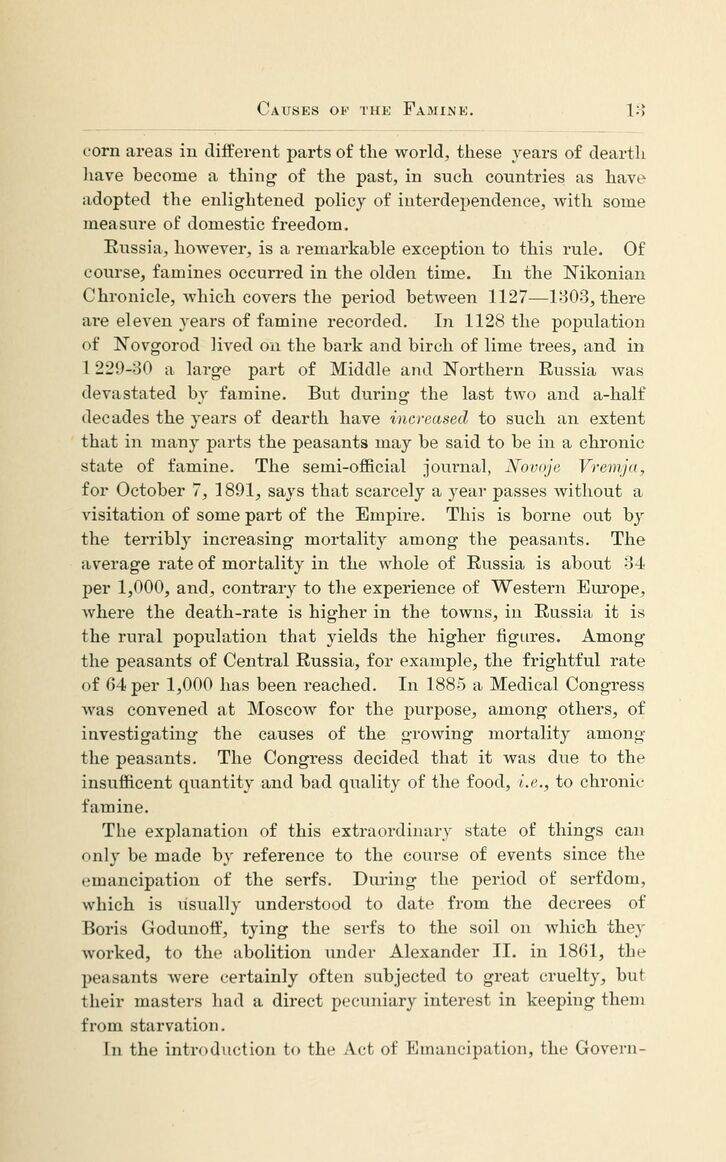
Full resolution (JPEG) - On this page / på denna sida - II. Causes of the Famine

<< prev. page << föreg. sida << >> nästa sida >> next page >>
Below is the raw OCR text
from the above scanned image.
Do you see an error? Proofread the page now!
Här nedan syns maskintolkade texten från faksimilbilden ovan.
Ser du något fel? Korrekturläs sidan nu!
This page has been proofread at least once.
(diff)
(history)
Denna sida har korrekturlästs minst en gång.
(skillnad)
(historik)
corn areas in different parts of tlie world, these years of dearth
have become a thing of the past, in such countries as have
adopted the enlightened policy of interdependence, with some
measure of domestic freedom.
Russia, however, is a remarkable exception to this rule. Of
course, famines occurred in the olden time. In the Nikonian
Chronicle, which covers the period between 1127—1303, there
are eleven years of famine recorded. In 1128 the population
of Novgorod lived on the bark and birch of lime trees, and in
1229-30 a large part of Middle and Northern Russia was
devastated by famine. But during the last two and a half
decades the years of dearth have increased to such an extent
that in many parts the peasants may be said to be in a chronic
state of famine. The semi-official journal, Novoje Vremja,
for October 7, 1891, says that scarcely a year passes without a
visitation of some part of the Empire. This is borne out by
the terribly increasing mortality among the peasants. The
average rate of mortality in the whole of Russia is about 34
per 1,000, and, contrary to the experience of Western Europe,
where the death-rate is higher in the towns, in Russia it is
the rural population that yields the higher figures. Among
the peasants of Central Russia, for example, the frightful rate
of 64 per 1,000 has been reached. In 1885 a Medical Congress
was convened at Moscow for the purpose, among others, of
investigating the causes of the growing mortality among
the peasants. The Congress decided that it was due to the
insufficent quantity and bad quality of the food, i.e., to chronic
famine.
The explanation of this extraordinary state of things can
only be made by reference to the course of events since the
emancipation of the serfs. During the period of serfdom,
which is usually understood to date from the decrees of
Boris Godunoff, tying the serfs to the soil on which they
worked, to the abolition under Alexander II. in 1861, the
peasants were certainly often subjected to great cruelty, but
their masters had a direct pecuniary interest in keeping them
from starvation.
In the introduction to the Act of Emancipation, the
<< prev. page << föreg. sida << >> nästa sida >> next page >>